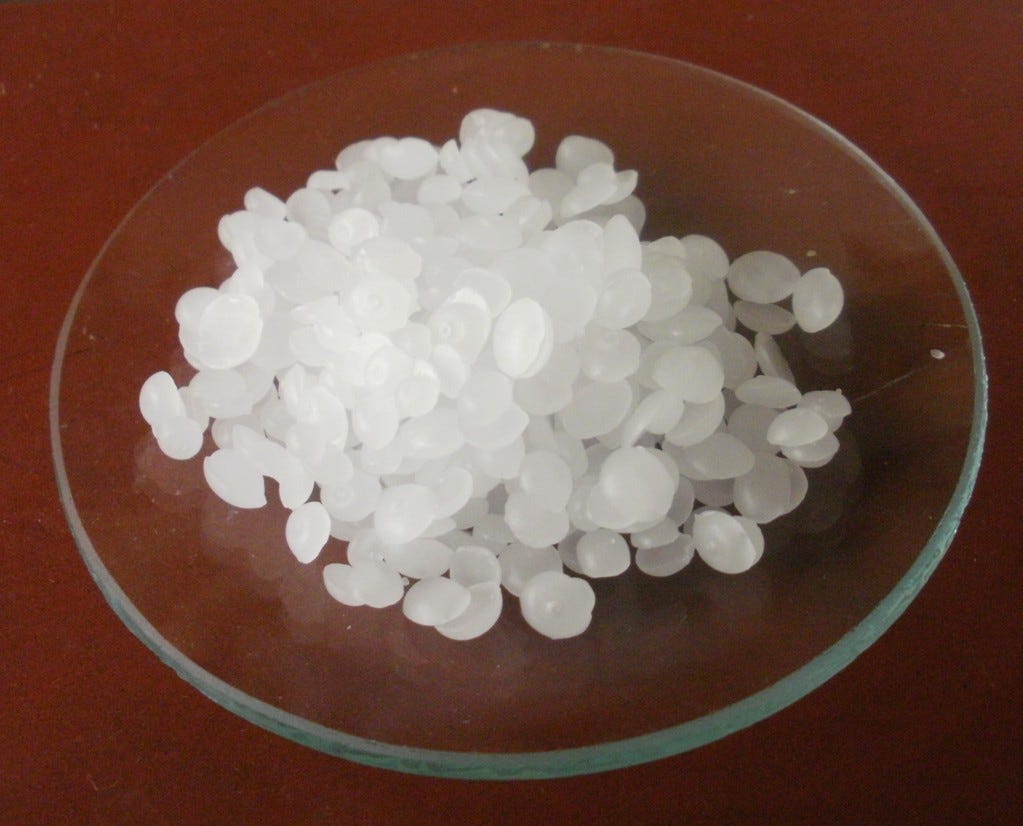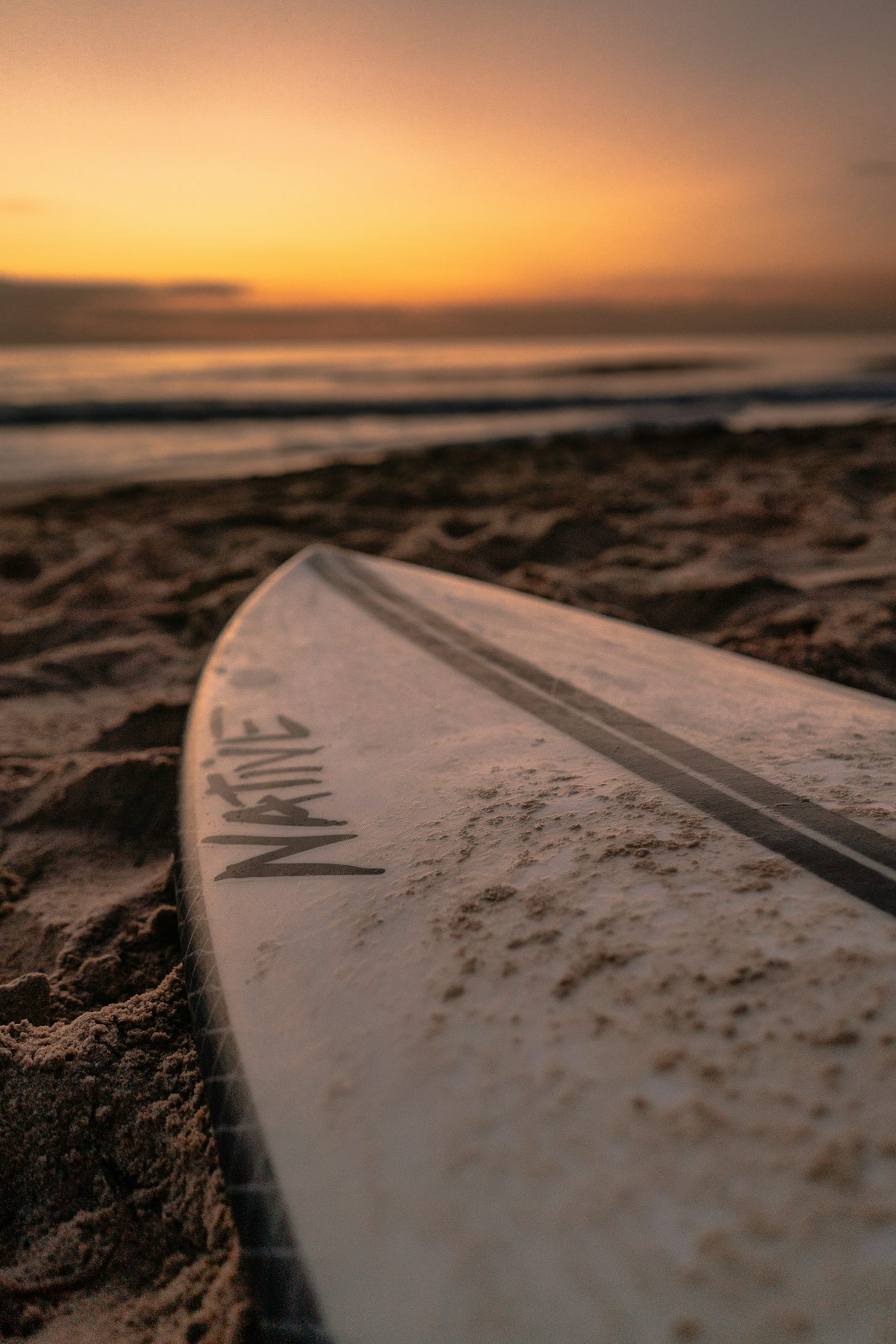The molecular structure of surf wax determines whether you're surfing or sliding. While modern surf wax comes in various colors and scents, the temperature-specific formulations are what keep you on your board, from icy Oregon beach breaks to tropical Indo.
The exact chemistry of surf wax varies by manufacturer and remains largely proprietary. Surf wax is primarily a blend of paraffin waxes - long chains of hydrogen and carbon atoms that pack together in crystalline structures. The length of these hydrocarbon chains, how tightly they pack, and any additives play a role in determining the wax's melting point and grip characteristics. The manufacturer’s choice of these variables in cold water wax prevent the wax from becoming brittle and slick in frigid waters.
Warm water waxes also use multiple waxes and potentially a mix of softening agents like coconut oil derivatives or petroleum jelly. These modifications create a more pliable surface that maintains grip without melting completely in tropical conditions. In cold water, they are generally harder and less tacky than the cold water variants.

Basecoat is essentially an extra-warm water wax. These extra-hard waxes create a foundation that holds its bumpy texture regardless of temperature, within reason. The basecoat's molecular structure prioritizes adhesion to your board and a raised texture over providing grip, leaving that job to the temperature-specific topcoat that is applied above.
The chemistry is similar to how different cooking fats behave - coconut oil solidifies in your pantry while olive oil flows freely, despite both being lipids, partly because the coconut oil’s lipids can pack closer together than the olive oil’s. The molecular architecture determines properties like the melting point, just as it determines whether your wax keeps you locked in or sends you snorkeling.
When surf wax melts and resolidifies, its molecular structure reorganizes. The original manufacturing process carefully controls how the wax crystallizes, creating specific patterns that optimize grip for a certain temperature range. This crystallization happens under precise conditions - temperature, cooling rate, pressure, etc.

When your wax melts in that car you forgot to crack the windows on, these controlled conditions disappear. As the liquid wax recools, the molecules reorganize themselves into larger, more uniform crystals with different properties than the original bar you bought. This natural reorganization typically creates a smoother, more uniform surface than a fresh coat. The molecular compounds haven't changed, but their architectural arrangement has shifted from an optimized grip pattern to a more thermodynamically favorable smooth surface - which is why that melted and resolidified wax has that shiny texture.
Natural surf waxes are starting to pop up more and more, and are worth a look from an environmental standpoint. While switching a bar of wax out won’t offset the pollution of flying across an ocean basin to a surf destination by any stretch, swapping a tree sap and beeswax alternative might just give the ecosystem by your local break a small reprieve from petroleum products. However, future studies on these alternative waxes may reveal that they are just as bad for the critters.
Further Reading:




Very interesting. A handy bit of info is that bees waxes are incompatible with hydrocarbon waxes. If yu want to swap you need to completely strip the old wax as even small amounts cause problems. This might not apply to all formulations but in Australa, Sex Wax and Mrs Palmers are incompatoble.
Would love to learn more about that last idea. Environmental impacts of hydrocarbon waxes? Yes please! Are new alternatives green washed? Tell me more! We shouldn't be flying across the planet to surf in a country where we don't speak the language? Shout it from the mountain tops!